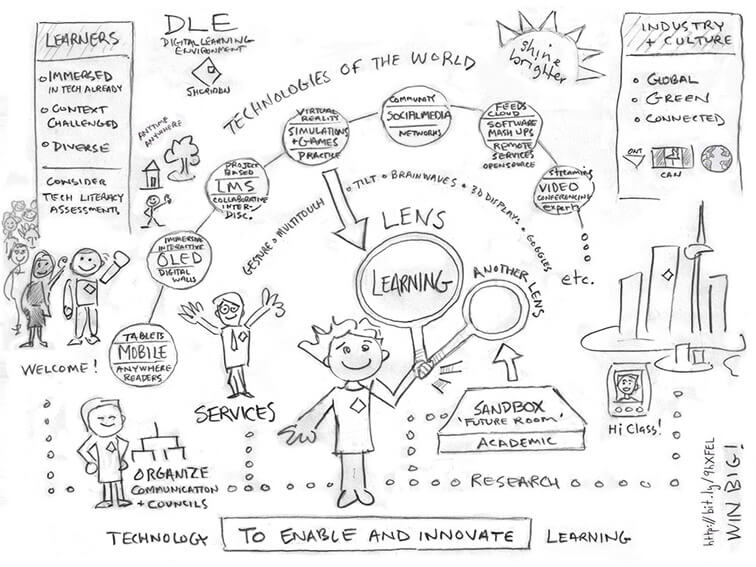 Rapid innovations in technology requires individuals to constantly upgrade their skills. New technologies are making it easier to access learning at any time. This creates a multitude of opportunities for Self-Directed Learning. However there are four main barriers identified preventing SDL:
Rapid innovations in technology requires individuals to constantly upgrade their skills. New technologies are making it easier to access learning at any time. This creates a multitude of opportunities for Self-Directed Learning. However there are four main barriers identified preventing SDL:

- Situational – arising from one’s given situation – lack of time, money, transportation, online access.
- Institutional – practices that exclude or discourage SDL – limited course selections, learning institutions’ costly tuition
- Dispositional – attitudes and perceptions of oneself as a learner – lack of motivation or self-discipline, unsuccessful past learning experiences
- Informational – lack of knowledge about educational opportunities available (Douglas, 2010)
Removing the barriers listed above will create opportunities for new ventures in SDL. Many ventures have tried to close the gap. Please see 10 Great On-Line Resources for Self-Directed Learners. Have you used any of these resources to help you perform on your job? If so, please use the comment section below to let us know how it was useful to you as well as the limitations. Which of the above barriers do you think the resource addresses? If you have not used any of the resources listed, please let us know about a resource you have used and how it was, or was not, helpful to you.
I have not used any of the resources to help me on the job, but I have referred to TedTalks before for both academic and personal knowledge. The video format is great – it keeps content interesting and engaging. They also screen content so everything you find is quality – a nice departure from a standard YouTube search. It helps answer the “where to start” questions. However, TedTalks are not perfect. There is not always content on the topic you are looking for. Also you cannot interact with the content or other learners i.e. there is no chat feature.
I have not used any of the listed resources on the job, but I have watched and learnt from many TedTalks. As Colleen said,they’re not always great but the ones that are, I find myself rewatching. I would love to be able to pose questions to the presenter and receive a response but that is not a functionality available with Ted.
I am also signed up with Quora and I enjoy the random questions and the very thorough and insightful answers provided. I learn a lot from Quora and it gets me thinking about topics I wouldn’t otherwise think about. I usually just read what is sent to me by email and what that may lead to further. I guess the limitation there is that it’s not very structured.
I attempt to offer self-directed learning opportunities for my high school students through choice. I find the greatest challenges for them is: “I find it difficult to set good learning objectives to guide my SDL” and “I don’t follow through if I’m not accountable to someone else”. If students are not curious about the topic, they have no desire to learn on their own. For me, the challenges I face as a classroom teacher are not finding the information, but inspiring students to be intrinsically motivated to learn. This is a difficult task when restricted by institutionalised demands (e.g. you MUST read Romeo and Juliet during this term).
The only resource that I have heard of from the above list is Ted. I wouldn’t say that I have “used” it to address an issue I’m having. Rather, I have watched some Ted Talks as a form of entertainment but I did not have the topic I wanted to learn about in my mind ahead of time.
The biggest issue I have with my own SDL is finding the time to learn about what I want to learn about. Often, I need to learn about things that I am not necessarily interested in because I have to complete a course, or a PD session, or I have to reprogram something on my phone or computer. I am fascinated by history but many of the things I want to learn about have no monetary value and so I learn about things that will benefit me in my job. I hope and expect that as I continue along this educational path my SDL opportunities will increase and I will be able to bring it more inline with my professional path.
I have used the Khan academy a bit at work, but I try to use at least one TED talk every month in my classes. They are still not commonly used in most schools in Japan, but it is slowly beginning to gain some recognition here.
I constantly watch Ted Talks but more for curiosity on many topics and also have used KHAN Academy videos for socials and math (I have had my students critique the historical videos for missing information and giant leaps in information). I prefer the video learning and do not like to register for courses (MOOCs) that I will not receive credit for. I always feel a need to finish these courses even if I have learned what I initially came for and this defeats the purpose of SDL for me. I find it difficult to find the time to learn on top of my responsibilities. After the MET program, I am hoping to have more time to delve deeper into some topics of interest that are not entirely work related and I will (happily!) not receive credits for. This way, I am happy to learn as informally as I feel like.
I have used Ted Talks for academic knowledge and personal development. It is easy to use, and it has topics divided by various categories, which makes it easier to choose from. I run a TED Talks discussion group, which helps me to add purpose and structure to my SDL.
I usually use Coursera, lynda.com, curious.com, udemy.com and other similar platforms and e-learning/instructional design blogs (http://theelearningcoach.com/, http://blog.cathy-moore.com/) for SDL. With coursera, I have completed some courses, but most of them I skim for the information I an interested in and return back when needed.
As for barriers, some of the learning resources I need require payment. Sometimes special software needs to be purchased.